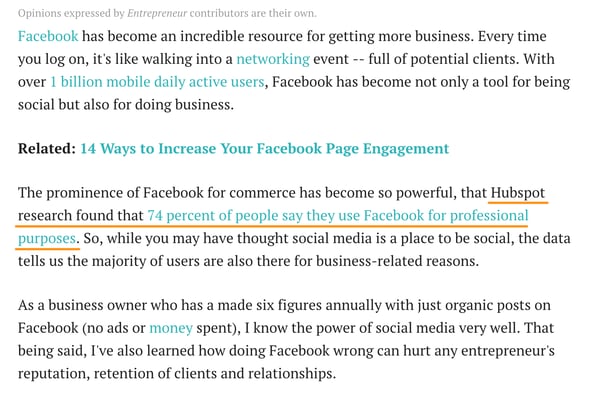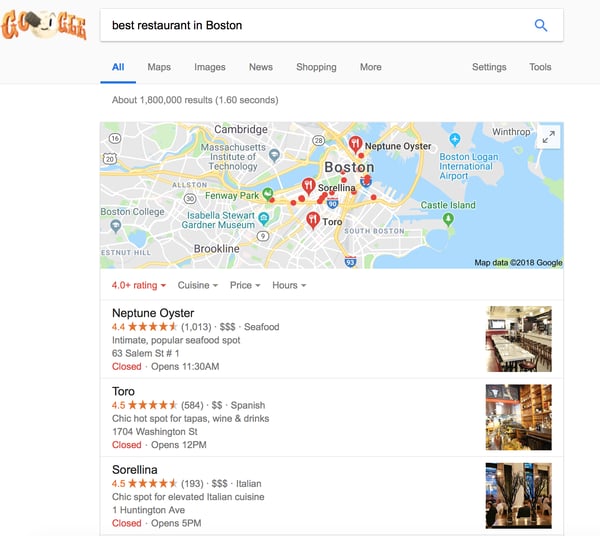These are the 3 Core Components of a Strong SEO Strategy. No3 Links
To optimize a site, you need to improve ranking factors in three areas — technical website setup, content, and links. So, let’s go through them in turn.
From what you’ve read in this guide so far, you know that no page will rank without two factors — relevance and authority. In their quest to provide users with the most accurate answers, Google and other search engines prioritize pages they consider the most relevant to their queries but also, popular. The first two areas — technical setup and content — focused on increasing relevancy (though I admit, some of their elements can also help highlight the authority.) Links, however, are responsible for popularity.
But before we talk more about how they work, here’s what SEOs mean when talking about links.
What Is a Backlink?
Links, also called backlinks, are references to your content on other websites. Every time another website mentions and points their readers to your content, you gain a backlink to your site.
For example, this article in Entrepreneur.com mentions our marketing statistics page. It also links to it allowing their readers to see other stats than the one quoted.
Google uses quantity and quality of links like this as a signal of a website’s authority. Its logic behind it is that webmasters would reference a popular and high-quality website more often than a mediocre one. But note that I mentioned links quality as well. That’s because not all links are the same. Some — low-quality ones — can impact your rankings negatively.
Links Quality Factors
Low quality or suspicious links — for example, ones that Google would consider as built deliberately to make it consider a site as more authoritative — might reduce your rankings.
That’s why, when building links, SEOs focus not on building any links. They aim to generate the highest quality references possible.
Naturally, just like with the search algorithm, we don’t know what factors determine a link’s quality, specifically. However, over time, SEOs discovered some of them:
- The popularity of a linking site: Any link from a domain that search engines consider an authority will naturally have high quality. In other words, links from websites that have good quality links pointing to them, work better.
- Topic relevance: Links from domains on a topic similar to yours will carry more authority than those from random websites.
- Trust in a domain: Just like with popularity, search engines also assess a website’s trust. Links from more trustworthy sites will always impact rankings better.
Link Building
In SEO, we refer to the process of acquiring new backlinks as link building. And as many practitioners admit, it can be a challenging activity.
Link building, if you want to do it well, requires creativity, strategic thinking, and patience. To generate quality links, you need to come up with a link building strategy. And that’s no small feat.
Remember, your links must pass various quality criteria. Plus, it can’t be obvious to search engines that you’ve built them deliberately.
Here are some strategies to do it:
Editorial, organic links. These backlinks come from websites that reference your content on their own.
Outreach. In this strategy, you contact other websites for links. This can happen in many ways. You could create an amazing piece of content, and email them to tell them about it. In turn, if they find it valuable, they’ll reference it. You can also suggest where they could link to it.
Guest posting. Guest posts are blog articles that you publish on third-party websites. In turn, those companies often allow including one or two links to your site in the content and author bio.
Profile links. Finally, many websites offer an opportunity to create a link. Online profiles are a good example. Often, when setting up such profile, you can also list your website there as well. Not all such links carry strong authority, but some might. And given the ease of creating them, they’re worth pursuing.
Competitive analysis. Finally, many SEOs regularly analyze their competitors’ backlinks to identify those they could recreate for their sites too.
Now, if you’re still here with me, then you’ve just discovered what’s responsible for your site’s success in search.
The next step, then, is figuring out whether your efforts are working.
How to Monitor & Track SEO Results
Technical setup, content, and links are critical to getting a website into the search results. Monitoring your efforts helps improve your strategy further.
Measuring SEO success means tracking data about traffic, engagement, and links. And though, most companies develop their own sets of SEO KPIs (key performance indicators), here are the most common ones:
- Organic traffic growth
- Keyword rankings (split into branded and non-branded terms)
- Conversions from organic traffic
- Average time on page and the bounce rate
- Top landing pages attracting organic traffic
- Number of indexed pages
- Links growth (including new and lost links)
Local SEO
Up until now, we focused on getting a site rank in search results in general. If you run a local business, however, Google also lets you position it in front of potential customers in your area, specifically. But for that, you use local SEO. And it’s well worth it.
97% of customers use search engines to find local information. They look for vendor suggestions, and even specific business addresses. In fact, 12% of customers look for local business information every day.
What’s more, they act on this information: 75% of searchers visit a local store or company’s premises within 24 hours of the search.
But hold on, is local SEO different from what we’ve been talking all along? Yes and no. Search engines follow similar principles for both local and global rankings. But given that they position a site for specific, location-based results, they need to analyze some other ranking factors too.
Local search results look different too:
- They appear only for searches with a local intent (for example, “restaurant near me” or when a person clearly defined the location.)
- They contain results specific to a relevant location.
- They concentrate on delivering specific information to users that they don’t need to go anywhere else to find.
- They target smartphone users primarily as local searches occur more often on mobile devices.
For example, a local pack, the most prominent element of local results, includes almost all information a person would need to choose a business. For example, here are local results Google displays for the phrase “best restaurant in Boston.”
Note that these results contain no links to any content. Instead, they include a list of restaurants in the area, a map to show their locations, and additional information about each:
- Business name
- Description
- Image
- Opening hours
- Star Reviews
- Address
Often, they also include a company’s phone number or website address.
All this information combined helps customers choose which business to engage. But it also allows Google to determine how to rank it.
Local Search Ranking Factors
When analyzing local websites, Google looks at the proximity to a searcher’s location. With the rise of local searches containing the phrase, “near me,” it’s only fair that Google will try to present the closest businesses first.
Keywords are essential for local SEO too. However, one additional element of on-page optimization is the presence of a company’s name, address, and phone number of a page. In local SEO, we refer to it as the NAP.
Again, it makes sense, as the search engine needs a way to assess the company’s location. Google assesses authority in local search not just by links. Reviews and citations (references of a business’s address or a phone number online) highlight its authority too. Finally, the information a business includes in Google My Business — the search engine’s platform for managing local business listings — plays a huge part in its rankings. The above is just the tip of the iceberg. But they are the ones to get right first if you want your business to rank well in local search.
What is Black Hat SEO?
The final aspect of SEO I want to highlight to you is something I also hope you’ll never get tempted to use. I mean it. Because, although it might have its lure, using black hat SEO typically ends in a penalty from search listings. Black hat practices aim at manipulating search engine algorithms using strategies against search engine guidelines. The most common black hat techniques include keyword stuffing, cloaking (hiding keywords in code so that users don’t see them, but search engines do,) and buying links. So, why would someone use black hat SEO? For one, because, often, ranking a site following Google’s guidelines takes time. Long time, in fact. Black hat strategies let you cut down the complexity of link building, for example. Keyword stuffing allows to rank one page for many keywords, without having to create more content assets. But as said, getting caught often results in a site being completely wiped out from search listings. And the reason I mention it here is that I want you to realize that there are no shortcuts in SEO. And be aware of anyone suggesting strategies that might seem too good to be true.
SEO Resources & Training
This guide is just a starting point for discovering SEO. But there’s much more to learn.Here are online training resources to try next:
You can also pick SEO knowledge from industry experts and their blogs. Here are some worth reading:
- SEMrush
- MOZ
- Yoast
- BrightLocal (local SEO advice)
- Search Engine Journal
- Search Engine Watch
- Search Engine Land
- Bruce Clay Inc.
Over To You
Without actively positioning its content in search results, no business can survive long. By increasing your search visibility, you can bring more visitors, and in turn, conversions and sales. And that’s well worth the time spent becoming an expert in SEO.


















